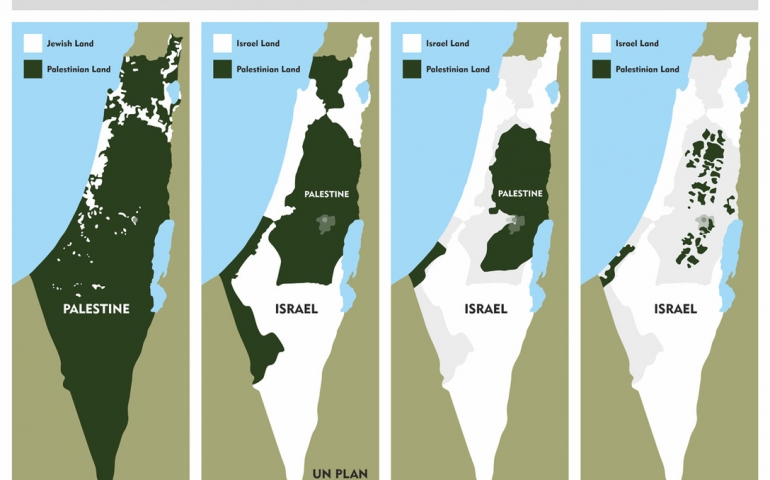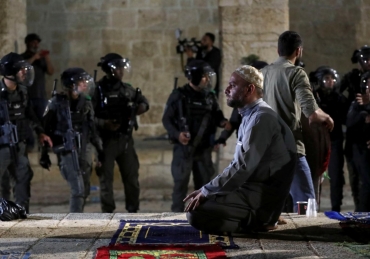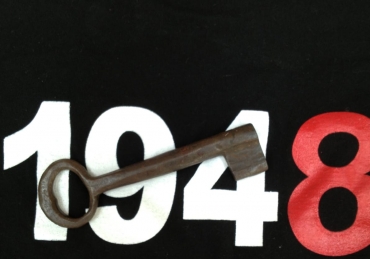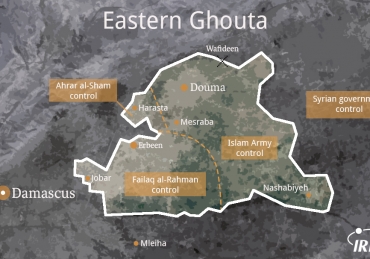By Bassam Abu Sharif, Palgrave Macmillan (2009), ISBN 978-0230608016, pp 288, RRP £14.99
Book Review by Yusuf Shabbir
Bassam Abu Sharif was described as the ‘face of terror’ and the ‘most notorious terrorist’ in the 1960s and 70s when he advanced the cause of the PFLP (Popular Front for the Liberation of Palestine). In 1972, a bomb placed in a book sent to him left him severely disabled. Subsequently, he abandoned the use of violence and aligned himself with Yasser Arafat, eventually becoming one of his closest advisors and an architect of the peace plan. In this indispensable personal memoir, Abu Sharif presents a first hand account of all the major events in the Middle East over the last 30 years; from the wars in 1967 and 1982 to the 1993 Oslo accords and Arafat’s death in 2004. Throughout, he reflects on his relationship with Arafat, his role and methodology and how this affected the Palestinian cause.
Abu Sharif begins his account by exploring the rise of Arafat after the 1967 war when he decided to infiltrate the Occupied West Bank and recruit fighters. This early period saw huge sacrifices and struggles and Arafat and his colleagues faced various internal and external challenges from the Israeli government as well as the Jordanians. The situation worsened after the attempted El Al hijacking from Amsterdam failed and Arafat decided to relocate to Southern Lebanon. From here, guerrilla operations against Israel became much easier.
Abu Sharif narrates key details of events and summits and in particular how Arafat was betrayed by two people. Firstly, in September 1973, Egyptian President Anwar Sadat invited Arafat to visit Cairo. Sadat’s aim was to get Arafat’s support as he planned a war to recapture Sinai. George Habash, the founder of PFLP, was sceptical about Sadat but Arafat took a pragmatic approach. He said, “Whoever participates in the war will reap its results, whether they are good or bad. But whoever does not participate, will lose for sure”. (p.40) Arafat and his team played an instrumental role in this process but Sadat’s decision to visit Israel a few months later and sign a peace agreement with Israel shocked him and other Arab leaders. Despite the 1977 Arab Summit decision to suspend diplomatic relations with Egypt, Abu Sharif describes how Arafat secretly maintained communications with Sadat because he saw the importance of having at least one of his “neighbours” open for diplomatic relations. The rationale for this, although many disagreed with Arafat and continue to see this as bearing negative consequences to this date, is explained by Arafat’s vision to keep on Sadat’s good side so that he could become the spokesperson for the new Palestinian state. This is because Sadat had started negotiations with Israel about the West Bank and Gaza.
The second betrayal came from President Reagan. Arafat understood the dynamics of international politics and the importance of convincing the United States. The fall of the Shah in Iran in 1979 was a blessing in disguise as far as Arafat was concerned due to the cooperation that resulted in training and resources and the severance of the Iran-Israel cordial relations that the Shah maintained. Arafat was the first leader to meet with Khomeini and the United States was aware of this. In 1979, a year before the US presidential elections, the American Embassy hostage crisis presented a serious challenge to President Carter. The Republican Party capitalised on this and an aide of Reagan was sent to meet with Abu Sharif as they knew he had ‘Arafat’s ear’. Reagan promised Arafat that he would open the doors of the White House for the PLO if Arafat delayed the mediation efforts. Arafat kept his promise but Reagan failed to do so.
Abu Sharif played a crucial role in representing Arafat at an international level. In 1983, he travelled to India and met with Prime Minister Indira Gandhi who was a good friend of Arafat. In somewhat contrast to the current Indian policy, she said to him, “Do not forgot to tell him that India loves him”. She also said, “The problem with President Arafat is that he relies too much on the countries of the Arab peninsula and the Gulf. He must be wary of them and be wise for they do not like him”. (p.136)
What is most interesting and revealing in this account is how the 1993 Oslo accord was reached and the role of Abu Sharif in the process. In 1988, he convinced Arafat to launch a comprehensive political peace initiative and started to draft the document at Arafat’s instruction. However, Arafat wanted Abu Sharif to publish the document under his name to test the waters. In what became known as the “Abu Sharif” document, it attracted international attention. Opinions varied both within Palestinian and the Israeli leaders and commentators, and there was uncertainty whether Arafat had endorsed or agreed to the content. This instigated official diplomatic contact from many European countries including Germany, France and Britain. Abu Sharif’s aim to portray the Palestinian people as victims was partially achieved through the proposition of a two state solution. Arafat realised the impact of the document when he arrived at Belgrade Airport, welcomed by Yugoslav President Dobrica Cosic. In the UK, Oxford University invited Abu Sharif to give a lecture which was attended by many Arab ambassadors and the Director General of the Foreign Office.
There is no doubt that the Abu Sharif document opened doors which were previously closed. In December 1988, the Swedish government invited Arafat and his colleagues to meet with American Jewish Leaders. This was the beginning of improving relations with the US administration and ultimately the recognition of the PLO. Abu Sharif describes in chapter 19 how the infamous Arafat speech before the UN General Assembly was drafted. In 1989, the British government officially recognised the PLO following a joint press conference with the Foreign Office in which Abu Sharif renounced violence in the hope for an independent Palestinian state. After Nelson Mandela’s release from prison in 1990, Arafat joined international leaders in the ceremony and sat next to Mrs Thatcher on the presidential table.
In chapter 34, the author describes the historical trip of Arafat and Yitzhak Rabin to Washington D.C. in 1993 where they shook hands and signed the agreement. However, what followed in the next 11 years echoed Arafat’s concern expressed to Abu Sharif in 1997, “Israel handed over 80 percent of Hebron with great reluctance … I see trouble on the way. They do not want peace. They will go back on their pledges and will not honour their agreements” (p.231). This is reflected in the September 2000 Intifada, after which Ariel Sharon rejected all international calls to cease the fighting. Abu Sharif received information in 2001 through reliable sources that Arafat was to be besieged, and in December, Israeli tanks invaded Ramallah and surrounded Arafat’s headquarters. The siege continued and Abu Sharif continued to visit Arafat and warned him to be cautious about food and water. On one occasion in 2004, Abu Sharif visited Arafat who was extremely ill and pale. Abu Sharif remains confident that the Israelis poisoned Arafat as they did to Dr Haddad thirty years ago. Abu Sharif made arrangements to ‘medivacke’ him to Paris but as he predicted, death was destined for him. The hand kiss of Arafat before embarking the helicopter was to be the last glimpse of this heroic President, leaving Abu Sharif to lament that the world will never be a same place.
Arafat was a man of passion, dedication and peace but he was betrayed by Israelis and the international community. His role in trying to avert the first Gulf War, mediating between Arab leaders and for the American hostages, illustrates his multi-facet approach to the Palestinian issue. However, the peace process, as he realised himself, was one sided and achieved little. The history of Palestine since the Balfour Declaration has been characterised with betrayal and the future of Palestine remains unclear. Although Abu Sharif proposes the unity of Palestinian factions, the historical opposition to the peace process makes this difficult. It is somewhat surprising that Abu Sharif makes no mention of Hamas throughout the book despite its increasing influence since its inception in the late 80s and its relationship with Arafat especially before his death. Nor is there an assessment, perhaps deliberately, of the much speculated role of Mahmoud Abbas in the death of Arafat and his resignation from the office of Prime Minister a few months before his death.
The book is highly informative and adds significantly to what the world knows about the late Yasser Arafat. A very useful list and biographies of key characters, organisations and key terminology is provided before the book begins. This personal account is invaluable for those who wish to understand the cause and the history of a nation of freedom fighters to whom Abu Sharif dedicates this book.







Warning the Ummah of the poison of tale-bearing (Namimah)